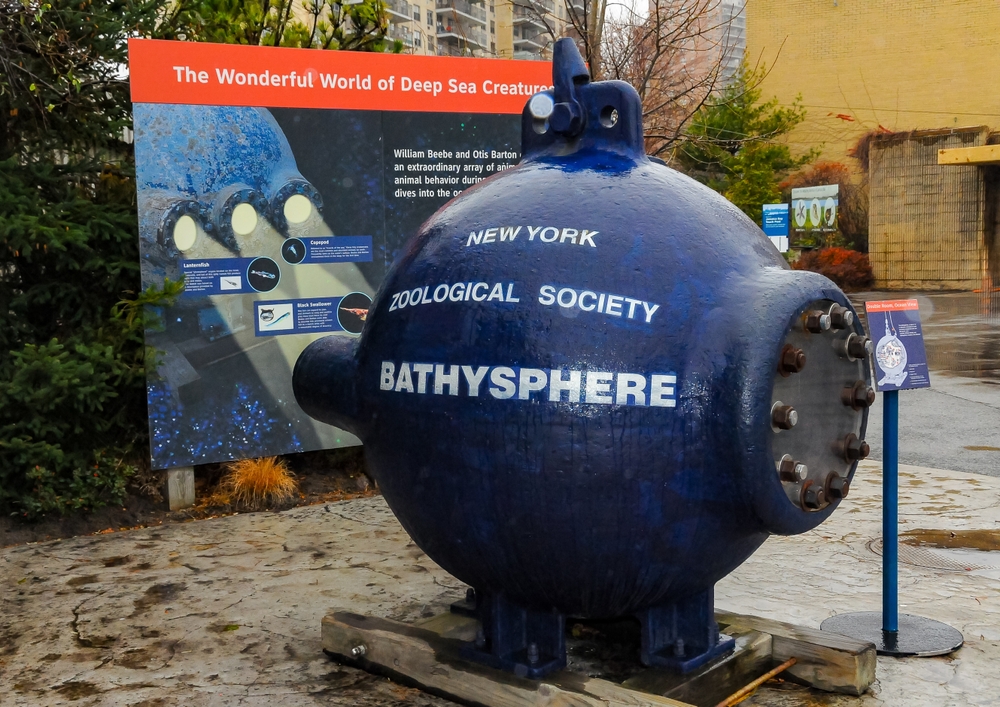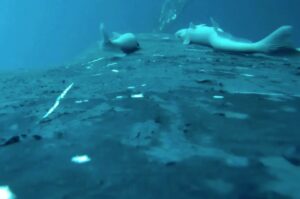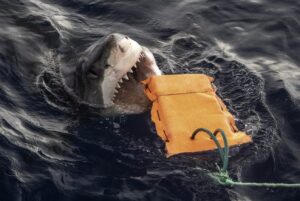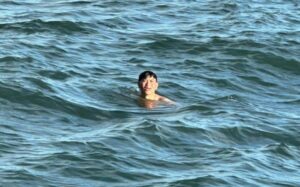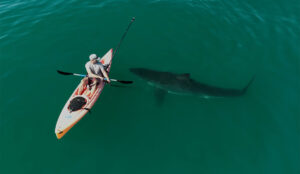Today we have advanced submersibles and ocean mapping technologies, yet the ocean remains a dark, mysterious place. For explorers in the 20th century, exploration of the deep sea was limited to rudimentary armored suits and submarines that could not go below 160m. It was exciting, dangerous work.
William Beebe and Otis Barton were early pioneers. The pair were responsible for giving the world its first glimpses of incredible deep sea creatures in a revolutionary craft they designed.
The Azoic Hypothesis
In 1843, Scottish naturalist Edward Forbes stated that life was not viable below 1,800ft (549m). This was called the Azoic Hypothesis and doubtless put off some early adventurers.
However, there were soon signs that deep-sea life existed. In 1860, a telegraph cable 520m below the surface running between Sicily and Algeria snapped. When engineers pulled the cable to the surface they found deep-sea organisms attached.
In the 1870s, the British ship HMS Challenger found deep-sea organisms while dredging and trawling.
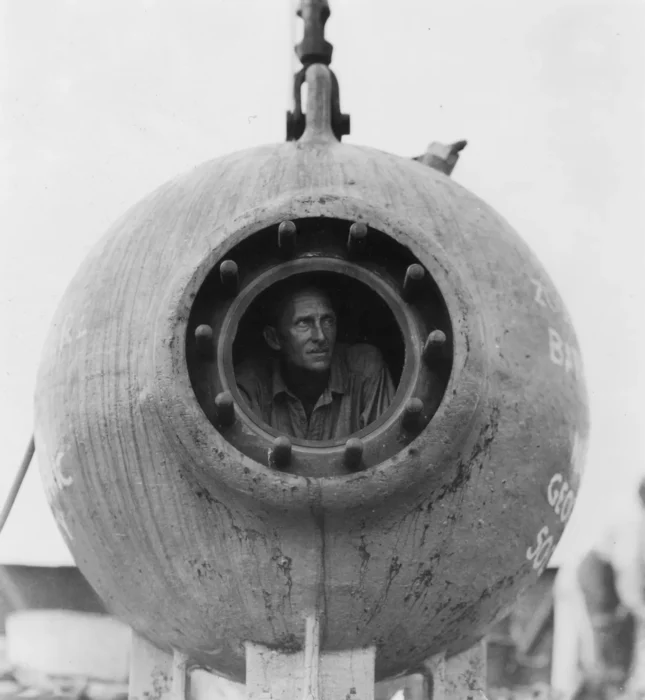
William Beebe in the bathysphere. Photo: WCS Photo Collection
The area between 1,000m and 4,000m is called the Bathypelagic or Midnight Zone. This refers to its blue-black color. Sunlight is almost non-existent at this depth, making photosynthesis impossible. A lack of movement from the currents above results in little oxygen, and pressures of over 5,850 pounds per square inch.
With no safe way to descend that far, scientists had no idea what was down there.
Enter William Beebe
William Beebe was a dreamer. His life’s pursuit was the depths of the ocean.
Growing up, he enjoyed taxidermy and collecting wildlife samples. He worked in the Bronx Zoo and later in the Galapagos in the 1920s. Eventually, he established a research station on Nonsuch Island in Bermuda. From there he began publishing his deep sea plans in magazines, which eventually caught the eye of Otis Barton.
Barton, an engineering graduate from Columbia University, saw Beebe’s designs and reached out with his ideas for a submarine craft.
Beebe was a brilliant man but was private and skeptical of others. Initially, Beebe turned Barton down, fearing it was a scam. Fortunately, a mutual friend stepped in to set up a meeting where Barton showcased his spherical designs. The meeting was a success and the two men agreed to split the costs of an expedition. Meanwhile, Barton foot the bill for the $11,000 craft.
The Bathysphere
They called their vessel the Bathysphere, a Greek word meaning ‘deep sphere.’ The craft was made of steel and its three windows were of fused quartz, three inches thick. Inside, there was a small light, a couple of fans, cables, pans of calcium chloride and soda lime, oxygen tanks, and a telephone. The latch alone weighed 400 pounds. In total, the Bathysphere weighed 2.25 tons and was four feet and nine inches in diameter.
The first test dives were rocky. On May 27, 1930, the Bathysphere descended unmanned to 14m. However, the second descent resulted in some concerning tangling of vital electrical cables. This prevented operations from moving forward for some time.
Eventually, the pair felt confident enough to go down themselves. They reached a depth of approximately 244m without incident. Through the quartz-fused windows, they noted unusual species with bioluminescent characteristics.
Their main goal was to reach half a mile below the surface, which they achieved on Aug. 15, 1934. The journey was documented in Beebe’s most popular work Half a Mile Down.
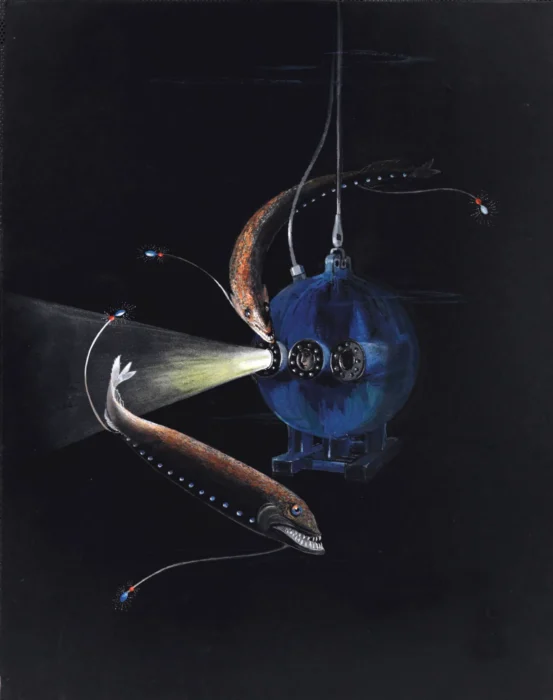
An illustration published in National Geographic. Photo: Else Bostelmann
There were always occupational hazards with dives in the Bathysphere. The steel ball had a condensation problem and a window cracked, leading the men to replace the quartz pane with a steel plug. Because of the stuffy conditions and close quarters, the men often suffered from motion sickness.
Sadly, their dives dried up during the 1930s. The Great Depression meant people were more concerned with putting food on the table rather than exploring the deep. But Beebe started writing about his adventures, which managed to keep his program afloat for a little longer.
The research team
Instrumental to Beebe’s and Barton’s success were research assistants Jocelyn Crane and Gloria Hollister. Crane was a carcinologist and researched tropical marine species. In the 1930s, she joined Beebe’s research team in Bermuda straight out of college. She helped to identify, catalog, and determine characteristics of new species.
Hollister was a zoology graduate and worked on transcribing telephone communications between the Bermuda station and the Bathysphere. She provided Beebe and Barton with vital information on weather patterns and their depth, which the Bathysphere was not capable of reading. Hollister even dived to 368m as a birthday wish.
Beebe, Barton, Crane, and Hollister’s research played a vital role in opening the door for women in oceanography and biology.
Observations
Some of the species the team discovered include bathysphaera intacta (giant dragonfish), a six-foot-long barracuda-like fish with blue bioluminescence along its body, and the three-starred anglerfish.
“While we hung in mid-ocean at our lowest level…a fish poised just to the left of my window, its elongated outline distinct and its dark sides lighted from sources quite concealed from me,” Beebe wrote.
On a dive in 1932, Beebe noted that “although my eyes were perfectly dark-adapted, I could detect not the faintest glimmer of light from 1,700ft (518m) down…from 1,700ft down, animal light is the only external source of illumination.”
He described both wildlife and the violet and blue hues of the water. “Blacker than blackest midnight, yet brilliant,” he wrote in one journal entry. The dives were brought to life in the illustrations of artist Else Bostelmann for the National Geographic Society.
Legacy
After 1934, the Bathysphere was no longer used for expeditions. But during World War II, it was briefly recommissioned by the U.S. Navy for underwater explosion tests.
By then the Bathysphere had a new and improved successor called the Benthoscope. Barton designed and operated it and was able to go down to 3,000m (10,000ft).
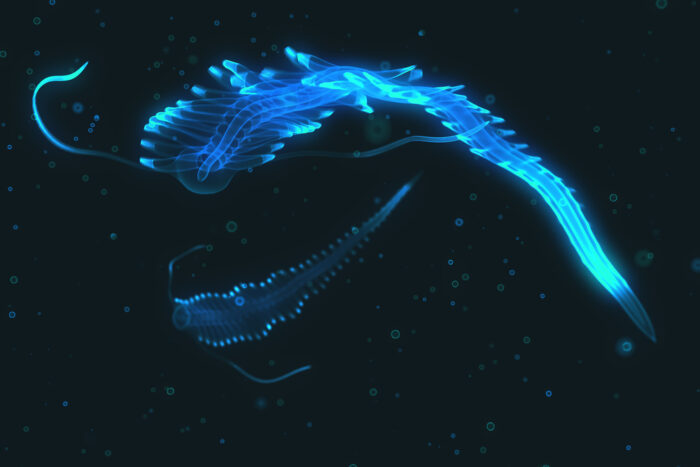
Bioluminescent creature in the deep sea. Photo: Shutterstock
Beebe and Barton’s work laid the groundwork for later explorers, like Jacques Piccard. In 1960, Piccard descended in his vessel, the Bathyscaphe, and reached a depth of 11,000m in the Marianna Trench. His vessel was not a ball but rather a cylindrical self-propelled design. It could go deeper than a submarine.
